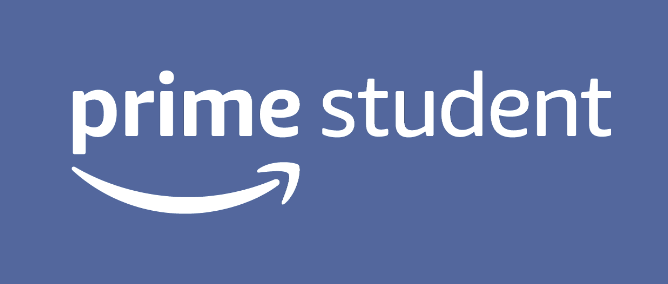TUN sits down with Holly Morrow, the senior vice president of knowledge at uAspire, to discuss how student loans work.
TUN: Holly, thanks so much for joining us.
MORROW: Thank you.
Let’s start with the basics. What is a student loan?
Great question. There are basically three types of financial aid that a student can apply for. Basically, there’s free money, gift aid, which is the best type of financial aid. There are student loans, which we are going to talk a lot about today. And there is work-study, where you can get a job on campus and earn money similar to how you would with any regular type of job.
In terms of loans, a loan is money that has to be paid back. So a student loan is exactly that. It is part of the financial aid offer that the colleges you’re applying to will offer you. And then, after you graduate college or after you drop below half-time, there’s a six-month grace period. That student loan is money that you are borrowing and that you do need to pay back after you’ve graduated or dropped below half-time.
Great, how do students get a student loan?
It is really important that all students who are applying for financial aid fill out the FAFSA, that is the Free Application for Federal Student aid. You can find it at studentaid.gov. It’s kind of the main gateway for all the different types of financial aid that we just spoke about before. But, it is absolutely the first step for being eligible for the different types of student loans that exist, and we’ll talk a little bit more about those different types in a bit.
The FAFSA is available as of October 1 each year. So if you are a senior, you can fill out your FAFSA right now. If you are a junior or younger, you have to wait until October 1 of your senior year. Filling out the FAFSA is the first step in being able to be eligible for a student loan.
There are follow-up steps. After the college has awarded you its financial aid package and if you have loans as a part of that offer, in order for you to actually get that loan money to your account, there are some other steps that happen usually the summer before you matriculate into college. There are things like entrance loan counseling, which helps you understand your rights and responsibilities as a borrower. There’s also something called a “master promissory note,” which basically is you signing something that you promise to pay it back.
There are some other steps in the process. But first and foremost, the most important thing is for students to fill out that FAFSA and list all the colleges that they are planning on applying to for that next year.
Great. What questions should students ask themselves before deciding whether or not to take out student loans?
The most important thing that we tell our students is, make sure that you’re applying to a variety of colleges. Ideally, the least amount of loans that you take out is the best. As I said before, our hope is that most students are able to maximize the gift aid or that free aid and that they don’t need to take out too many loans.
Note: For tips on choosing a college, check this interview with Dr. Eric Endlich, founder of Top College Consultants, on how to choose a college that’s right for you and this interview with Sonali Bridges, founder and president of Bridges Educational Consultant, on how to choose the right “reach” college.
So, a question that students should be asking themselves is, “What is the overall cost of attendance for the different colleges I’m applying to?”
As a student starts to fill out their financial aid application, which is the FAFSA, they’ll get a better understanding of what their family’s financial situation is. They’ll understand what their family’s expected family contribution is. So it’s getting down to the point of having a really clear understanding of how much the colleges cost and how much financial aid the student will be eligible for. And then it is important to have family conversations about what the family is willing to take out in terms of any loan debt.
What’s really important to note is that there is a maximum in terms of the federal loans that a student can take out each year. For example, freshmen are able to take out only up to $5,500 in student loans from the federal government. Anything above and beyond that would be a conversation on if the family is willing to take out additional loans? So, that might be a question that a student might have.
Another question that students should be asking and understanding is, “What is the interest rate for loans?” We can talk a little bit about that in terms of the different types of loans that exist.
But, focusing on federal loans, another question is, “What are the repayment requirements that that loan offers?” There are a lot of different repayment options that the student will have.
So, those are the types of questions. “How do I apply?” “What is the interest rate?” “How do I repay?” When do I have to repay?” Those are the types of questions that students should be asking about any loan, but hopefully, they are focusing on those federal loans.
Great. What are the different types of federal student loans? Do students get to choose which type of loan they borrow?
Federal student loans are broken down into the Federal Direct Subsidized Loan and the Federal Direct Unsubsidized Loan.
Subsidized Loan
So, the subsidized loan is available to students who have demonstrated financial need based upon financial information that is supported on the FAFSA. If you do have need, you’re eligible for the subsidized portion of the Federal Direct Loan. “Subsidized” is just a fancy word to say that the government is going to pay to cover the interest on that loan while you’re in college, so the interest is not growing or accruing. And the maximum amount that a student can get changes each year. For freshman students, it is $3,500. It goes up each year that the student is in college. So that’s the subsidized portion of the Direct Loan.
There’s also an unsubsidized portion of the Direct Loan as well. Freshman students can get an additional $2,000 of unsubsidized Federal Direct Loans. “Unsubsidized” means that a bit of interest starts accruing on that loan.
The interest rate gets reset each summer. So if you’re a high school senior right now and you’re just filling out the FAFSA, you’ll find out what that interest rate is this summer.
So, all of that combined together makes it about a maximum of $5,500 for each first-year college student for the Direct Federal Loan.
There are other federal loans that potentially parents can apply to take out. That is something called the Plus Loan. But, it is really important to remember that there are limits for students in terms of how much they can take out each year in their name.
So, a really important family conversation to have early on is to just be open and honest and to see if parents are willing to apply for and take out loans on behalf of the student’s education. But, that loan would be in the parents’ name only.
Great. What are private student loans and when should students consider taking out private student loans?
Private student loans are additional loans that are offered by a wide variety of other entities outside of the Federal Government. Your local bank might have a private loan. You can look online and you can find different companies, such as Sallie Mae, for example. You might have seen a lot of advertisements right now for SoFi. Those are just examples of other lenders.
So, federal loans will actually be listed when students fill out their FAFSAs and once they get their financial aid offer letters from the colleges. It will be listed from the college because they’re the direct lender of that federal money.
If the cost of attendance is greater than that amount of aid awarded, whatever’s left over is going to be what the student has to come up with out of pocket, if you will, or their estimated bill. So, sometimes, students will look at private loans to help cover that, and they would have to apply for that separately.
So, sometimes students will turn to look at private loans to help cover that. They have to apply for those separately. It is a completely separate process from the FAFSA.
Here at uAspire, we really recommend that students exhaust those federal loans first and potentially have that conversation with their parents around the Federal Plus Loan before they start looking at those private lenders.
I’m not saying that private loans are bad, but we just want to make sure students are taking advantage of low interest rates and the multiple repayment options that the federal government has.
So, again, exhaust all federal loans before you start looking at private loans. That’s our recommendation at uAspire.
If you do need to look for private loans, typically they’re going to be asking for you to fill out an application. Typically, the rates are going to be dependent upon credit scores. Typically for students, they are going to have to find a cosigner for that private loan. So, there are a lot of other steps that would be required if a student does go down the path of looking at private lenders.
Great. So, students should know which federal student loan repayment options to choose. There are a lot of them, but can you go through a couple of the best ones and potentially some that students should avoid as well?
I mentioned earlier that one of the follow-up steps, if you do end up taking out a federal student loan, is that you do have to go through entrance counseling. So, that student loan entrance counseling is going to educate you on your loan and it’s going to start to look into the future and explain to you what those different types of repayment options are.
There’s a standard 10-year repayment option that some folks take out. What’s great, though, is that there are a lot of other income-based repayment options out there.
Income-based repayment plans are not going to make you pay a set amount each month regardless of how much money you make. That’s a standard payment plan. Income-based repayment plans are going to look at how much money you’re actually earning in your current job, and you’re going to pay a certain percentage of that amount.
At uAspire, we really recommend income-based repayment plans. We think it sets the students up for the best success based upon how much income they’re bringing in. It just makes sense to us that the amount that they would have to pay back is based upon income. The more money you’re able to make in your income, the more you can start to pay back your loans. But, the expectation is set to that ratio of how much you’re earning.
Also, if you go into a certain field of work — if you’re doing public service type of work — there is loan forgiveness. So, depending upon your major, that’s something you can also take a look at when it comes to federal loans. There are some great programs that are out there in terms of loan forgiveness as well.
Great. What should people do if they can’t make their student loan payments after they graduate? What are their options?
Once the student does graduate, or if they drop below half time, and their loans get kicked into repayment and they’re having trouble making those payments, the most important thing to do is to communicate with your loan servicer.
So, once you take out that loan and when you start to go through that entrance loan counseling, you’ll know who your loan servicer is. So, it’s basically the person that you would reach out to if you’re having any issues. You can let them know if you’re having a hardship. The next steps might be a wide variety of things, and each servicer is going to work with each student differently.
But, the most important thing would be to make sure the servicer knows what’s going on. Over-communicate as much as possible about that situation so that they’re in the know about everything that is happening. That’s the best thing a student can do if they’re unable to make those payments.
Great. Thanks, Holly, for joining us today.
Thank you so much.
This interview has been edited for clarity.



